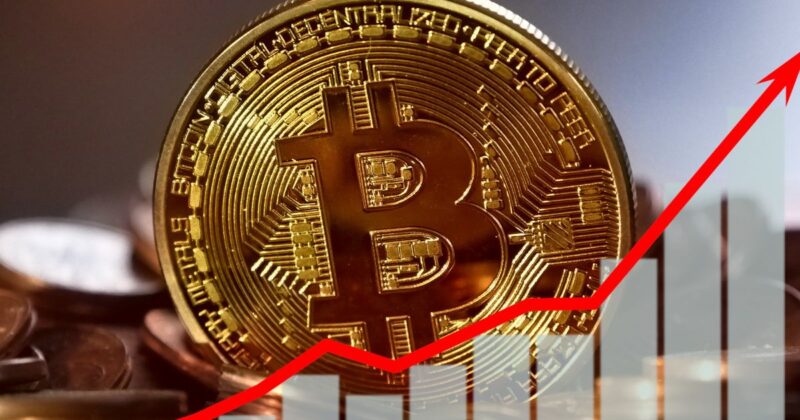
As we move into 2025, the financial world is set to encounter a series of transformative shifts driven by technological advancements, economic pressures, and changing consumer behaviors. Companies like ITEZ are at the forefront, providing innovative ways for people to navigate this dynamic landscape, including options to purchase USDT, a popular stablecoin pegged to the U.S. dollar, offering greater stability amid volatile markets.
The drive toward digital currencies, shifts in regulatory frameworks, and the growth of decentralized finance (DeFi) are just a few elements shaping 2025’s financial trends. ITEZ, a pioneer in digital finance solutions, enables users to buy USDT quickly and easily, reflecting broader trends in simplifying cryptocurrency access. Below, we’ll delve into the top financial trends expected to dominate 2025.
1. Digital Currency Adoption on a Global Scale
Central Bank Digital Currencies (CBDCs) and stablecoins like USDT are gaining traction as viable alternatives to traditional currency. Governments worldwide are exploring CBDCs to create a state-backed digital currency framework. This shift has been accelerated by ongoing concerns around traditional banking, the speed of financial transactions, and the need for more accessible financial systems. Countries like China and the European Union have already initiated pilot programs, while the U.S. Federal Reserve continues to explore the potential for a digital dollar.
As the use of digital currency rises, stablecoins like USDT offer an attractive, less volatile option for investors, especially for those wary of the high volatility associated with cryptocurrencies. This trend is fostering a renewed interest in digital payment solutions, where platforms like ITEZ play a vital role in simplifying the buying and holding of USDT and other stablecoins.
2. Decentralized Finance (DeFi) and Smart Contracts
DeFi has been a hot topic in recent years, and in 2025, it will continue to redefine the financial landscape. By enabling transactions without intermediaries, DeFi empowers individuals with direct control over their financial assets. Smart contracts—self-executing contracts with the terms of the agreement directly written into code—are an essential part of this trend, allowing for automated, transparent financial transactions.
This growing interest in DeFi platforms can also be attributed to the demand for financial inclusivity. In regions where banking infrastructure is less established, DeFi can be a viable solution, offering easier access to loans, savings, and investment products. However, with DeFi’s growth, regulatory scrutiny will likely increase to protect users from potential risks like security breaches and fraud.
3. AI-Powered Financial Management
Artificial Intelligence (AI) is becoming a central tool for financial management, helping individuals and companies make more informed decisions. AI applications like robo-advisors, predictive analytics, and personalized investment strategies are gaining popularity. Financial institutions are increasingly utilizing AI to analyze customer data, provide insights, and customize financial recommendations.

In 2025, AI-driven financial platforms will offer more accurate market insights, allowing users to better manage risks and optimize portfolios. This technology also provides users with real-time alerts about market fluctuations, helping them act promptly and make data-backed investment decisions.
4. Sustainable and ESG Investing
Environmental, Social, and Governance (ESG) criteria are playing an increasingly important role in financial decision-making. Investors are showing a growing preference for companies with sustainable practices, putting pressure on corporations to prioritize social responsibility and environmental stewardship.
As this trend continues, companies that demonstrate commitment to ESG principles are likely to attract more investment. Financial institutions are expected to adapt their offerings to meet this demand, providing more options for sustainable and impact investing. Additionally, ESG scores, which measure a company’s sustainability performance, will become essential metrics for investors in 2025.
5. Rise of Fintech Solutions for Underserved Markets
Fintech is emerging as a powerful force in addressing financial inclusion, especially in underserved markets. Companies that specialize in digital payment systems, micro-lending, and decentralized currency exchanges are making financial services more accessible to populations without traditional banking services. The continued expansion of mobile payment technologies, particularly in developing regions, will further drive this trend.
By breaking down traditional financial barriers, fintech firms are providing crucial services like micro-loans, affordable remittance options, and mobile banking to those who have historically been excluded from financial systems. This democratization of finance is a significant trend to watch in 2025, as it has the potential to reduce poverty, boost local economies, and foster economic stability.
6. Regulatory Shifts in the Crypto Landscape
Regulations are evolving rapidly in the cryptocurrency sector as governments and regulatory bodies strive to strike a balance between fostering innovation and protecting consumers. In 2025, we can expect more clarity in crypto regulations, especially concerning areas like DeFi, stablecoins, and digital asset exchanges.
These regulations may involve stricter Know Your Customer (KYC) and Anti-Money Laundering (AML) policies, as well as additional safeguards for investors. While increased regulation might slow innovation in the short term, it also has the potential to create a safer, more reliable environment for investors in the long run.
7. Continued Growth of Alternative Investment Options
In 2025, traditional investment options like stocks and bonds will continue to face competition from alternative assets. Real estate, commodities, collectibles, and digital assets such as NFTs are increasingly appealing to investors seeking diversification.
Alternative investments provide a means of hedging against market volatility, making them especially attractive amid economic uncertainty. Moreover, the rise of tokenized assets—physical or digital assets represented by tokens on a blockchain—will make alternative investments even more accessible to retail investors.
8. Emphasis on Financial Literacy and Education
With the financial landscape becoming more complex, financial literacy will become a primary focus in 2025. Consumers are showing increased interest in understanding the products and services available to them, and financial education platforms are growing in popularity.

Educational initiatives will play a significant role in empowering people to make informed decisions and navigate the risks associated with various financial instruments. Many companies are recognizing this trend and investing in user education, aiming to make the financial world more transparent and accessible.
Preparing for 2025
The financial trends shaping 2025 highlight a future where technology, accessibility, and responsibility converge. Companies like ITEZ, with services that allow users to easily buy USDT and other digital assets, are already facilitating these transitions. The accelerated adoption of digital currencies, AI advancements, sustainable investing, and decentralized finance are just a few developments indicating that the financial world is on the brink of a transformative era.
For individuals and businesses alike, keeping pace with these trends means embracing innovation, educating themselves about new financial tools, and staying aware of changing regulations. As the financial landscape evolves, those who remain adaptable and informed will be best positioned to capitalize on the opportunities that lie ahead.










